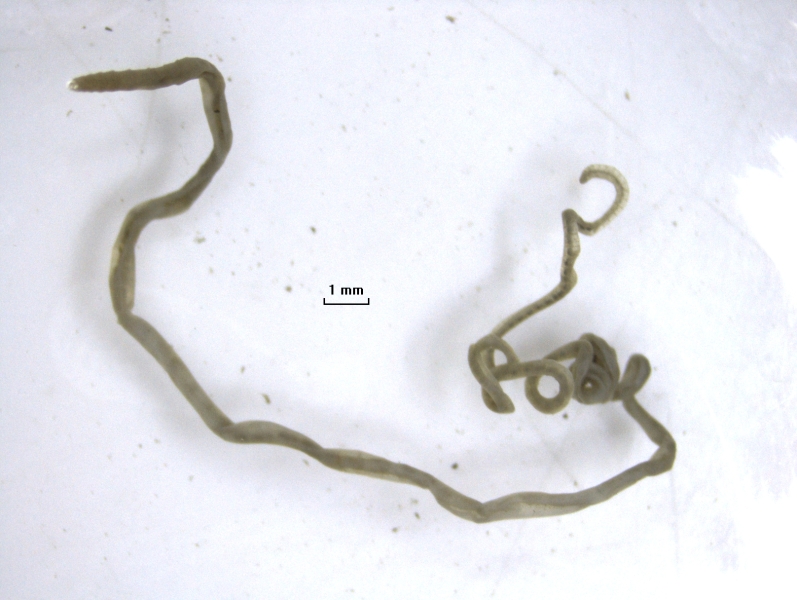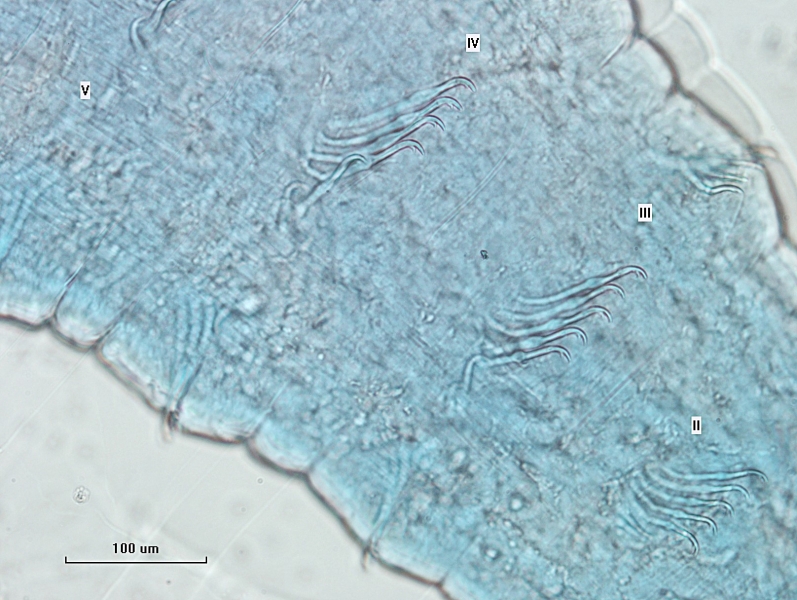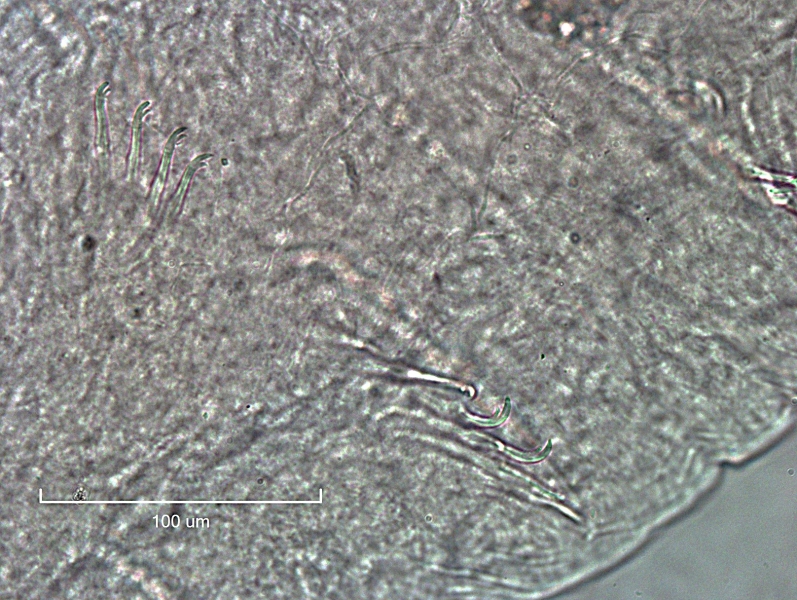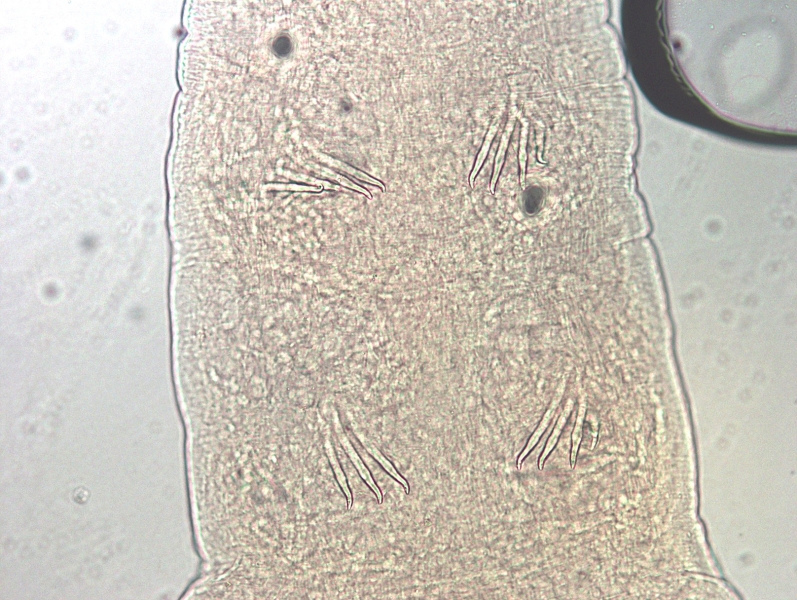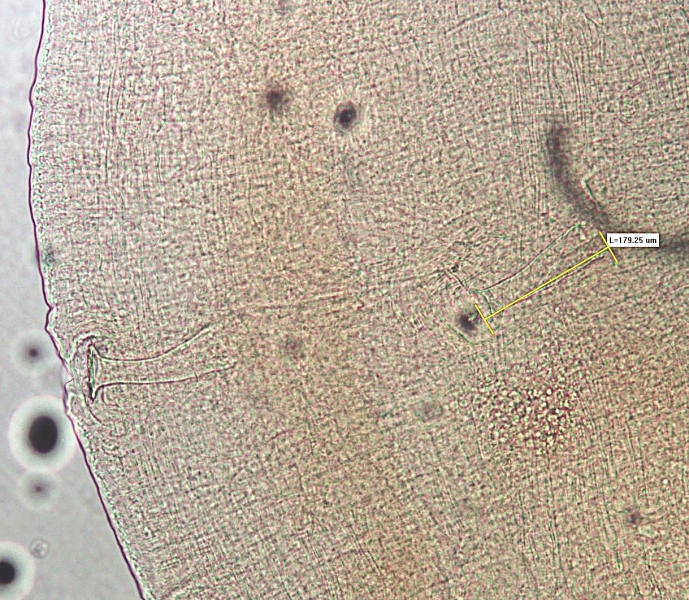Limnodrilus udekemianus
Taxa description
Limnodrilus udekemianus Claparède, 1862 is a freshwater oligochaete worm that is uncommon in the Great Lakes. It is a tubificid worm with bifid dorsal and ventral chaetae beginning in II and short cuticular penis sheaths in XI when mature. The anterior bundles have 3–8 chaetae. It is common for Limnodrilus spp. to have variation in the chaetae, but there is less variation in L. udekemianus and the shape of its anterior chaetae is unique and pronounced. In the anterior bundles, the upper teeth are much longer and thicker than the lower tooth, which is usually very short or vestigial, and the teeth are bent about 90° to the axis of the chaetae. Posterior bundles have much fewer chaetae with the teeth more equal. The penis sheaths are 160–200 μm and the small head plate is usually at right angles to the shaft, either reflected back over the shaft or possibly pushed forward during slide preparation. L. udekemianus may be unusually large compared to other oligochaetes when fully developed.
Distinguishing features
L. udekemianus is mainly identified by the bifid anterior chaetae with a large, thick upper tooth and very small lower tooth bent at a right angle to the shaft of the chaetae. There are no hair chaetae. It has two cuticular penis sheaths in segment XI of adults, which are less than 200 μm with a small head plate perpendicular to the shaft.
Habitat
L. udekemianus can be found in soft substrates in littoral areas, from organically enriched to oligotrophic habitats. It is occasionally very abundant.
Lake occurrence
Lakes Erie, Huron, Michigan, and Ontario.
Similar species
Unlike the other Limnodrilus species, L. udekemianus can be identified when it is immature due to the presence of the anterior chaetae with very large upper teeth at 90° to the shaft of the chaetae. If the anterior chaetae are damaged, however, and it is immature, then it could only be identified as “immature tubificid without hair.” It is possible to confuse the penis sheaths of L. udekemianus with L. profundicola because they have similar shaped penis sheaths that are short. L. profundicola is usually 194–300 μm long, and L. udekemianus is usually shorter at 160–200 μm. It’s possible but unlikely to be confused with other Limnodrilus species with longer penis sheaths, such as L. hoffmeisteri which can be as short as 300 μm, but even underdeveloped penis sheaths are usually longer than 200 μm and the anterior chaetae of L. udekemianus are quite distinctive. L. rubripenis is not found in the Great Lakes, but it has enlarged ventral chaetae in V–IX with the upper tooth twice as long and thicker than the lower, but not at 90°. Its penis sheath may be reddish-brown, 350–490 μm long, flared at the base, with a headplate with two lateral projections set perpendicular to the shaft.
There are some other tubificid worms with upper teeth much larger than the lower, but none of them are bent 90° to the shaft and many have features that would exclude them from being confused with L. udekemianus. Tubifex nerthus has pectinate dorsal chaetae and hispid hairs, but the anterior ventral chaetae have the upper tooth twice as long as the reduced lower tooth, which may be absent. Its penis sheaths are as long as they are broad, whereas L. udekemianus has penis sheaths up to four times longer than broad. Many other tubificids have the upper tooth longer and thinner than the lower, equal, or shorter and thinner, not longer and thicker. Sometimes there may be immature tubificid worms with upper teeth longer than the lower but not at 90°; these should still be listed as immature tubificids unless they are distinctly longer and thicker than the lower and sharply bent.
Relative size
L. udekemianus is a very large freshwater oligochaete when fully developed.
Does it have a barcode reference from the Great Lakes?
Yes, this species does have a barcode reference from the Great Lakes.
References
Kathman, R.D., and R.O. Brinkhurst. 1998. Guide to Freshwater Oligochaetes of North America. pp. 156–157, 134, 154–162, 140–141, 192–193, 22-23.
Stimpson, K.S., D.J. Klemm, and J.K. Hiltunen. 1982. A Guide to the Freshwater Tubificidae (Annelida: Clitellata: Oligochaeta) of North America. pp. 32, 36–39, 48.


